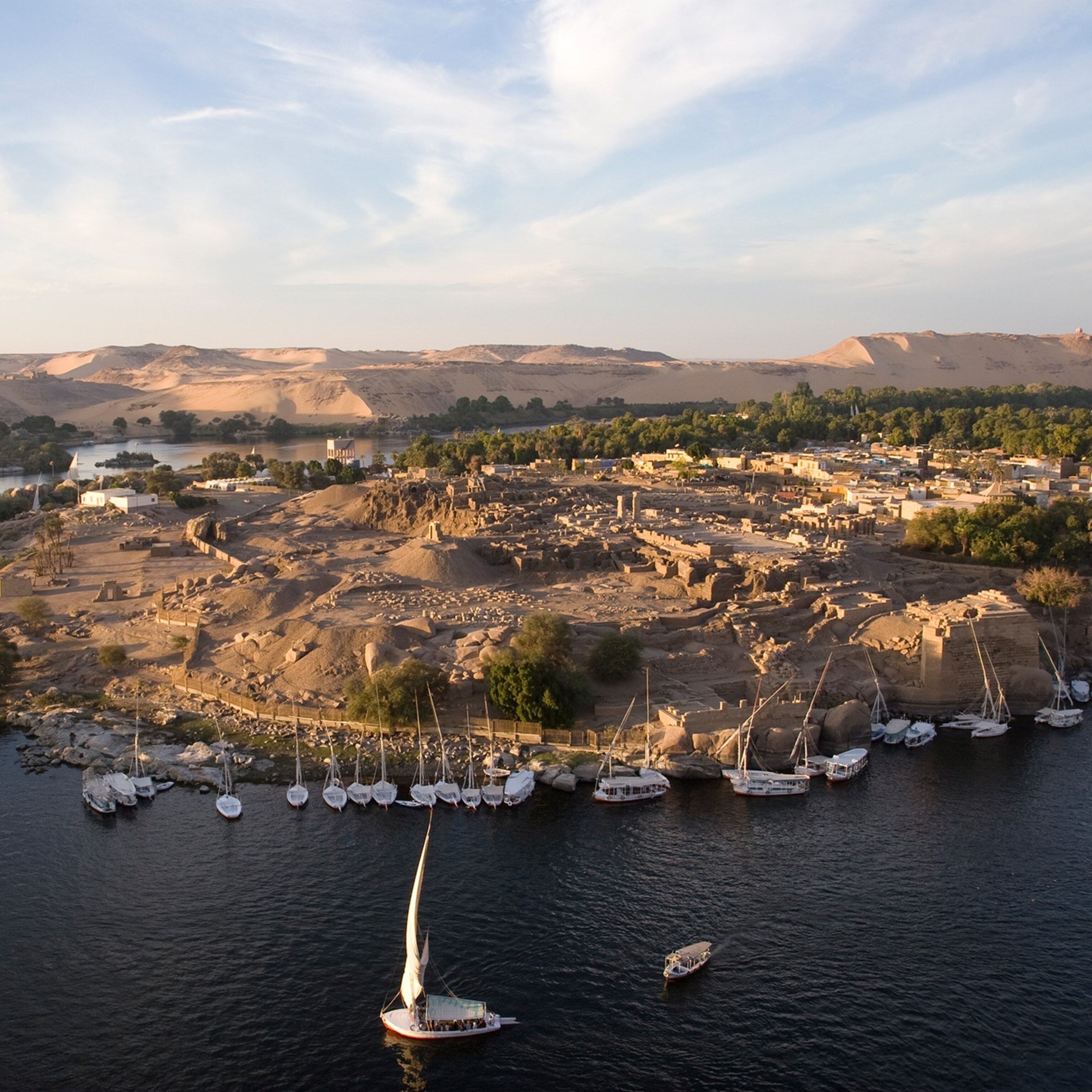This 2,400-year-old statue reveals insights into ancient Spain
Hungry for artifacts from an elusive Iberian civilization, archaeologists were thrilled to find an elaborate funerary statue dubbed the 'Lady of Baza.'

North of the small city of Baza in southern Spain lies a pre-Roman necropolis known as Cerro del Santuario. In 1971 it was being excavated and one July morning, under the blaze of the Andalusian sun, a worker’s tool struck something hard. It appeared to be a colored rock, but when archaeologist Francisco José Presedo came to look he saw something intriguing. As more earth was cleared away, the face of a woman emerged, finally seeing the light after nearly 2,500 years underground.
Known today as the Lady of Baza, this four-foot-high limestone sculpture depicts a bejeweled woman, richly dressed and seated on a winged throne. Once vividly painted, the work still bears traces of pigments, including a rosy blush on the cheeks and red-and-white squares along the border of her cloak. Inside a compartment in the right side, cremated human remains were found, confirming the Lady of Baza’s role as a funeral urn, dated to around 380 B.C.

The Lady of Baza resembles other carved stone female figures found elsewhere in Spain, such as the Lady of Elche, a similar artifact discovered in 1897. The two statues were both once richly painted and adorned with Iberian attire, headdresses, earrings, and necklaces.
These objects were products of the pre-Roman people, the Iberians, a culture that is still shrouded in considerable mystery. With her elaborate adornments, however, the Lady of Baza presented researchers with intriguing clues as to who was entombed in her body.
The statue’s details also link the Iberians to other cultures around the Mediterranean, including the Romans and the Carthaginians. The Iberians’ homeland became embroiled in the struggle between these two powers a century after the Lady of Baza was carved.
Mystery culture
Writers in antiquity referred to people who lived across a swath of what now Spain as Iberians. Archaeologists, however, use the term in a stricter sense to mean the original Bronze Age peoples in that region. (Ancient DNA shows mysterious genetic takeover in Iberia.)
They were descended from a culture known as the Argar, a hierarchical, chief-led society that collapsed in around 1500 B.C. Starting around 1000 B.C., the new, complex Iberian society began to emerge. Like their Argar forebears they were skilled in metalworking, and became rich by trading with merchants from the eastern Mediterranean.
Celtic newcomers pushed into north, west, and central parts of Spain starting in the eighth century B.C. They mingled with the local Iberian population and created a hybrid “Celtiberian” culture. The Celts, however, did not penetrate the arid hillsides of the southeastern Mediterranean coast, which retained higher concentrations of the original Iberian population.

The Celts’ speech is of Indo-European origin (as are 445 of the world’s languages), but not much is known about the origins of the Iberians’ mother tongue. Inscriptions in Iberian script have been discovered and bear some resemblance to the Phoenician alphabet, but much of the way the Iberian language works is unknown, leaving scholars heavily dependent on archaeology for gathering information on ancient Iberians and their culture.
Of all the Iberian tribes in the southeast, one seems to have been the most influential around the fourth and third centuries B.C. The Romans later named them Bastetani for Basti, the town that was their capital. Known today as Baza, it’s where the Lady of Baza was found nearly 50 years ago. (Face of a 7,500-year-old woman reveals Gibraltar's earliest humans.)
Learning from the lady
Iberian scholars consider that the cremated remains in the Lady of Baza’s side are those of an aristocratic local Bastetani woman who died around 380 B.C.
Unlike other female funerary sculptures found in Spain, which had at some stage been moved from their original burial sites, the Lady of Baza was discovered in situ. The figure was originally attached to the northern wall of a square chamber tomb in the necropolis, some six feet underground.
Grave goods from the Lady's Tomb
Various offerings had been deposited in front of her: ceramic vessels with polychrome decorations and metal weapons. Whoever she was, she was important: The objects at her feet emphasize her high status. These artifacts also bear stylistic influences of the Greek and Phoenician peoples with whom the Iberians traded. (The Phoenician's built their empire on a vibrant purple dye from sea snails.)
Both throne and figure are carved from a single block of stone, coated with a layer of plaster, and painted several different colors: blue, red, black, and white. Scholars believe the figure’s face could be a realistic depiction of the deceased, but there is no real way to tell.
The statue’s iconography reveals the influence of a powerful outside culture. When the Baza lady was alive, Iberian wealth depended on a powerful new trading center created in North Africa by Phoenicians. They had named their capital Carthage, which in Phoenician means “the new city.”

Carthaginian influence manifested on the Lady of Baza’s spiritual purpose. Her winged throne alludes to a goddess, as does the pigeon she holds in her left hand. Scholars believe these avian symbols refer to the Phoenician deity Tanit, a mother goddess and chief deity in the western Mediterranean. In the fourth century B.C., the cult of Tanit was central to Carthage.
Beginning in 264 B.C., Carthage began expanding into Spain during a series of wars with Rome but was eventually pushed out by their foes in 206. The Iberian peninsula gradually fell under Roman control. As Rome’s influence grew in the region, the local Iberian culture and its ancient language began to disappear. (A 2,600-year-old Phoenician wine 'factory' has been unearthed in Lebanon.)
Today, the Lady of Baza is exhibited in Spain’s National Archaeological Museum in Madrid. Along with the Lady of Elche and other gems, she is an important piece in the increased understanding of ancient Iberia.













